My Introduction to Canadian Precancels (c. 1950s-60s)
• Found in large lots
• Viewed as less desirable than normal used stamps and not given much attention by dealers and catalogues
• Years of research resulting in essential publications (see last slide) has encouraged growth in collecting Canadian precancels
How I Got Interested In Them
• Very limited philatelic budget
• Many were cheap (pennies)
• H. G. Walburn had published a set of album pages, a catalogue and ran an approval service – all I needed
What Is A Precancel?
A precanceled stamp is a postage stamp that has been cancelled before being affixed to mail. Precanceled stamps are typically used by mass mailers, who can save the postal system time and effort by prearranging to use the precancels, and delivering the stamped mail ready for sorting.
Who Uses/Used Them?
• United States
• Canada
• Austria
• Belgium
• France
• Great Britain
• Others?
Early Issues/Forerunners
• Two overprints appeared in 1888 on several Small Queens as shown here.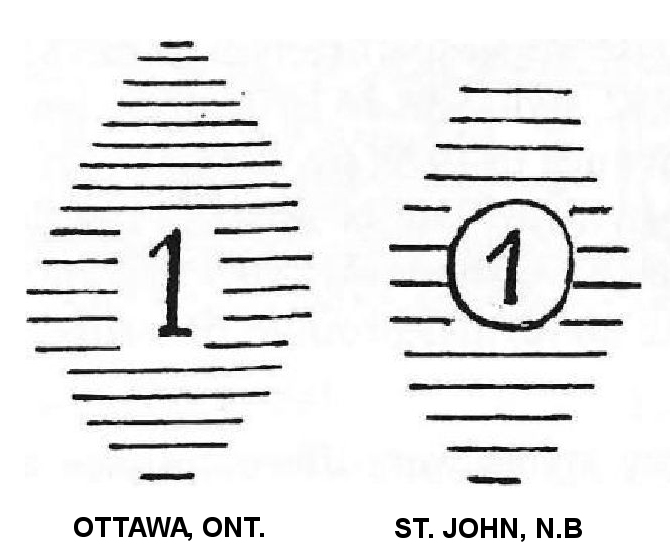
• The lack of a dater points to a possible precancel use
• Finding a cover would help confirm their first-precancel status.
Early Issues/Forerunners
• Roller 21 introduced in Montreal
• Known on 1,2, 3, 5, 6 and 10-cent Small Queens; also the 15c Large Queen
• Known inverted, vertical, double and triple
• These can be found in dealers’ stocks mixed in with conventionally used examples
Bar Precancels
• The catalogue recognizes 22 styles designated A – Y
• Early types are straight lines applied with a roller. Double, triple and vertical impressions exist
• Later styles are more distinctive
• Modern styles are simple pairs of straight, thin lines
Early Types – Styles - 1
• A: two wide bars on Small Queens (SQ)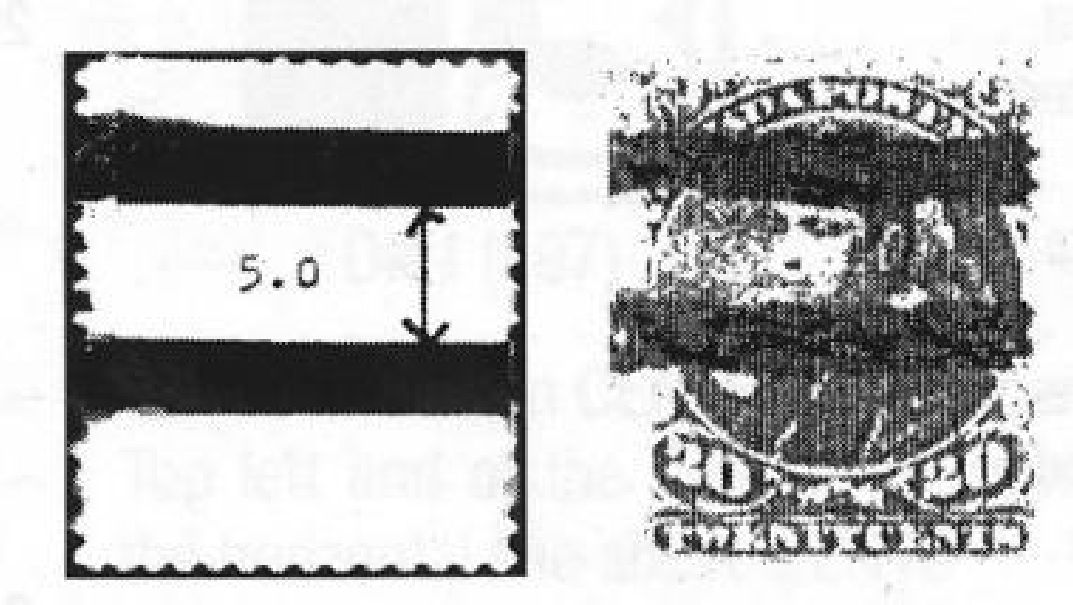
• B: Usually 4 bars, sometimes 3 or 5 (SQ)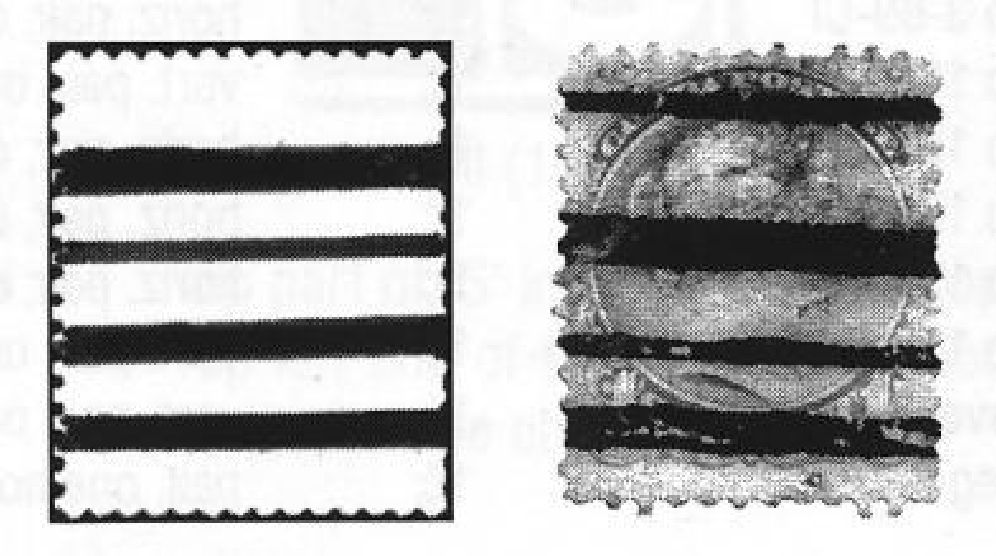
Early Types – Styles - 2
• C: Usually 5 or 6 bars, not evenly spaced (SQ)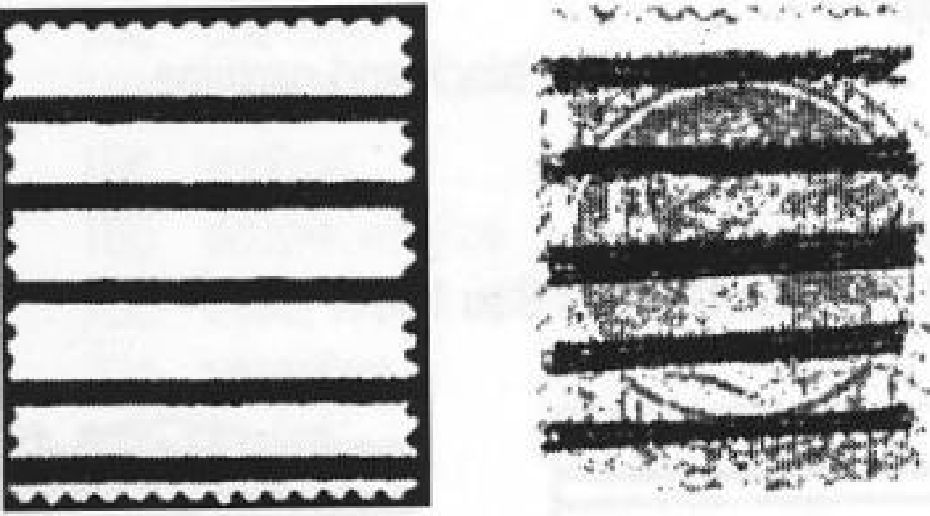
• D: Usually 4 or more thick bars (SQ)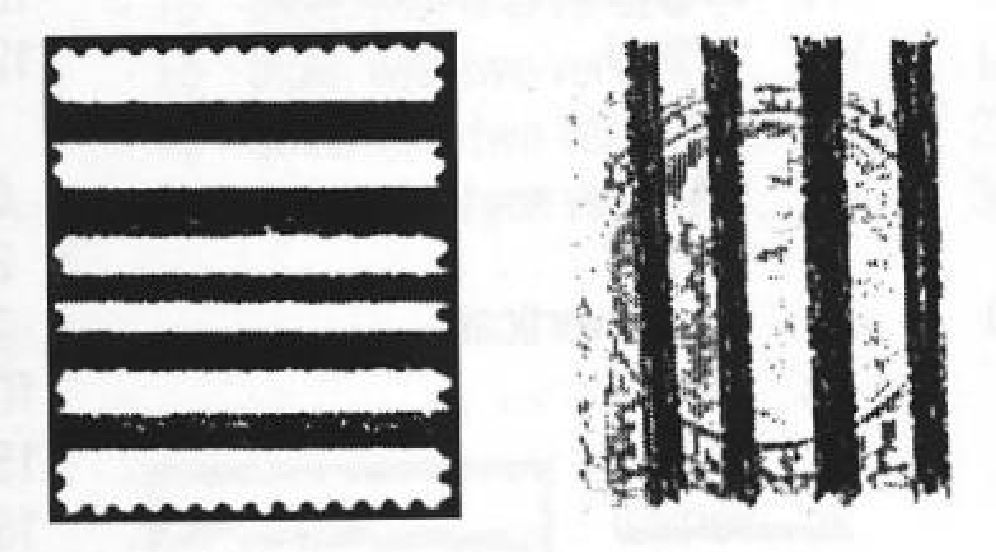
Early Types – Styles - 3
• E: Usually 4 or 5 bars including 1 thin bar (SQ)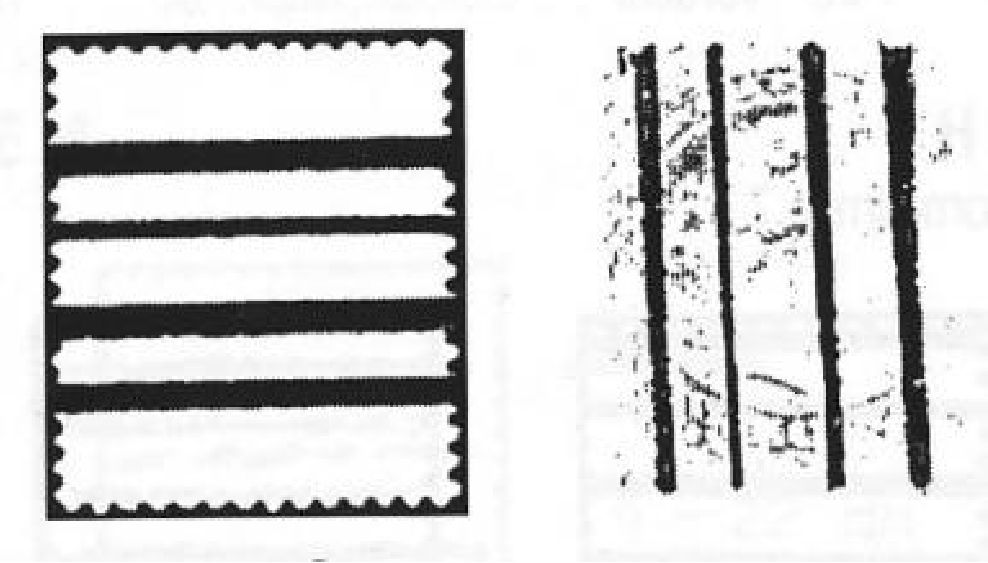
• F: Usually 5 bars, including 1 thick bar (SQ)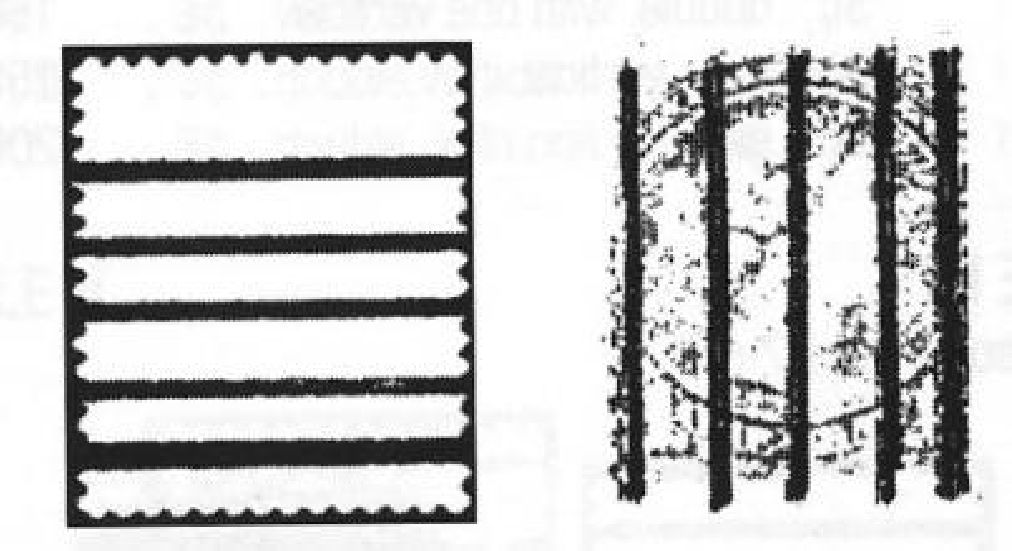
Early Types – Styles - 4
• G: Usually 6 bars, evenly spaced (SQ)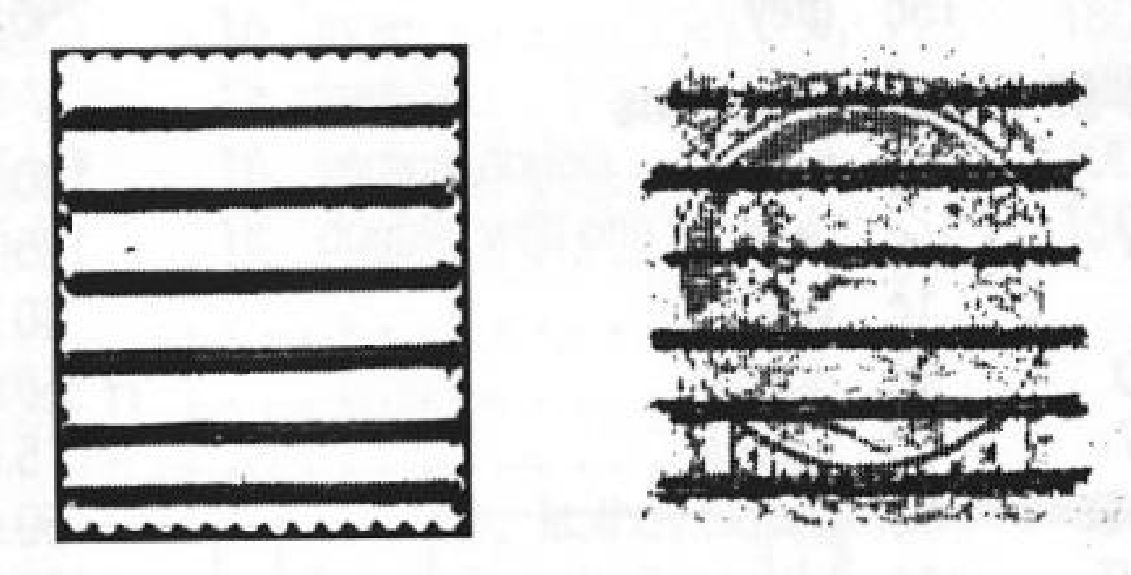
• H: 8 bars, sometimes 7 (SQ)
Early Types – Styles - 5
• I: 8 bars, sometimes 7 or 9 (SQ) and on Large Queens (LQ)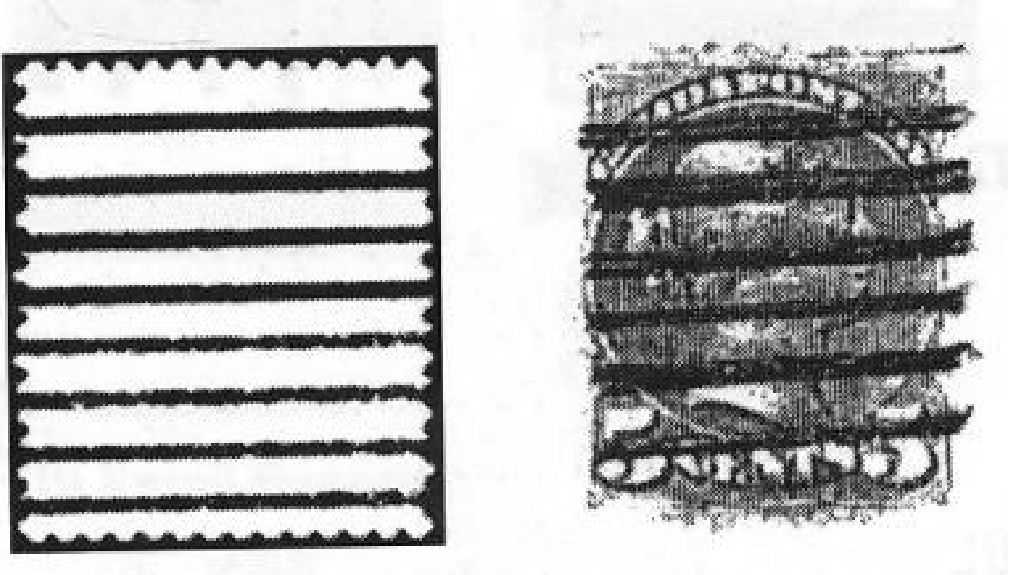
• J. Usually 11 bars, sometimes 8 to 10 (SQ & LQ)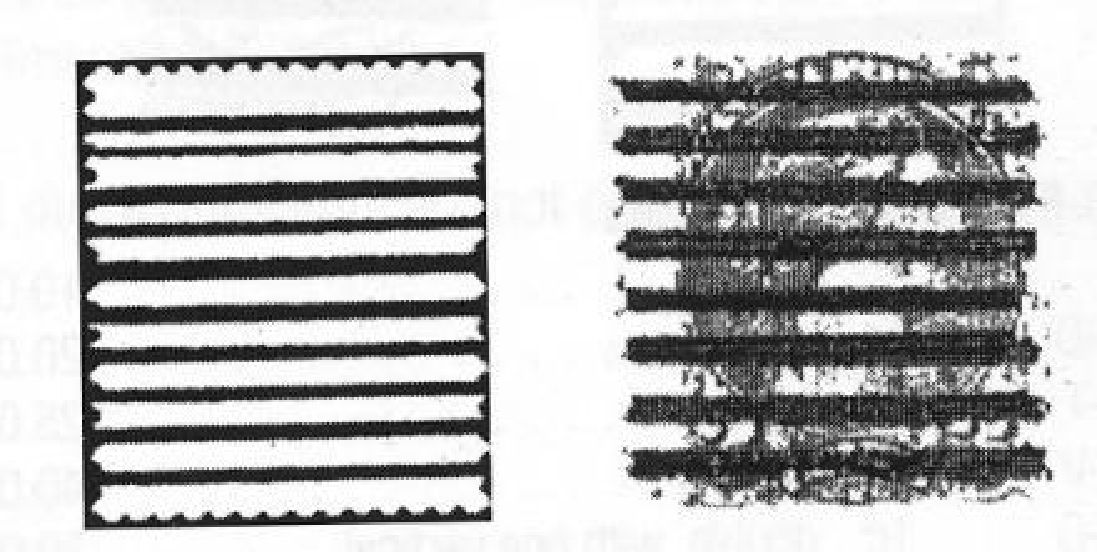
Early Types - Varieties
• As if the variability in precancel styles weren’t enough to confuse us, many of them appear doubled, vertical, doubled with one vertical, tripled and even with mixed styles.
• Even among experts, there can be disagreements and lengthy debates to arrive at a consensus as to what variety a particular example may be.
More Types - 1
• K: two braided lines (SQ)
• L: three braided lines (SQ)
Later Types - 2
• M: four braided lines (SQ)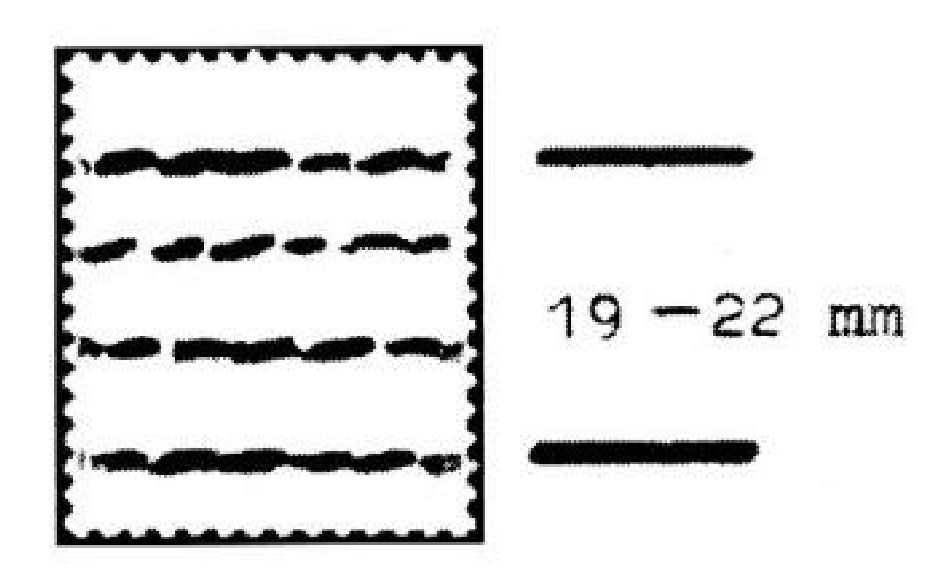
• L: three braided lines (SQ)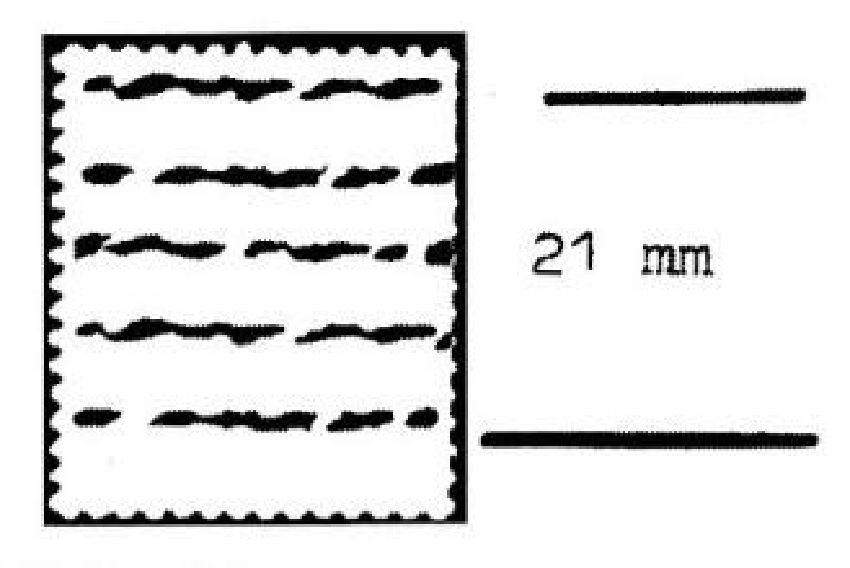
Later Types - 3
• R: one wavy line between two straight lines (LQ & SQ)
• S: similar to style R (LQ & SQ)
Later Types – 4 In Use Through Edward VII
• T: as style S but slightly shorter;
• U: one thick wavy line between two straight lines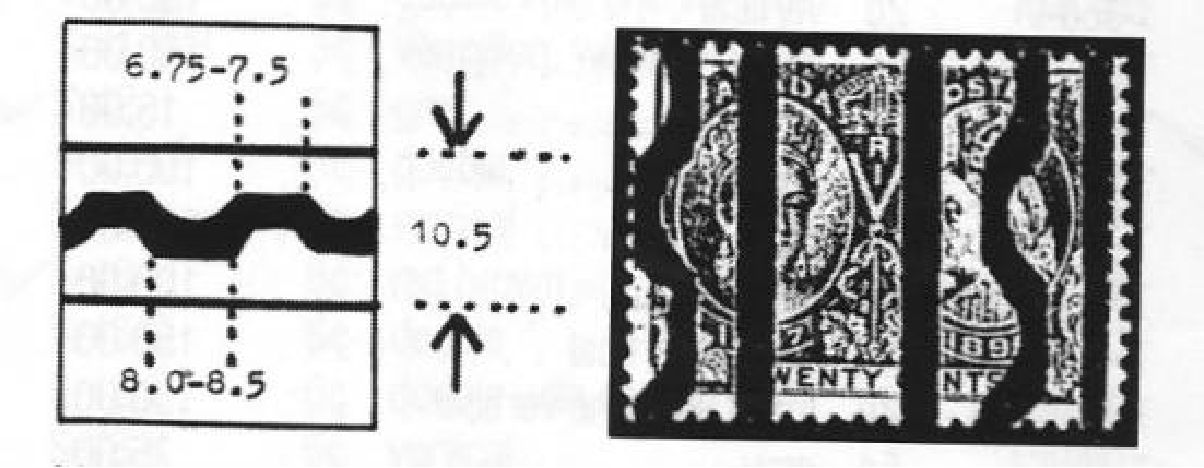
Later Types - 5
• V: three pairs of straight lines, each 0.75 mm thick – in use from George V through Elizabeth
• W: lines are 0.5 mm thick – George V only
Later Types - 6
• X: lines are 0.3 mm thick – in use from George V through Elizabeth
• Y: two pairs of lines – Elizabeth only on issues of 1973-1977
Town and City Precancels
• 59 locations recognized thus far•Prepared locally
• Styles are fairly consistent from town to town but significant differences exist in some cases
• Varieties abound – most common are the inverted overprints
Early Types
• Stamps of the reign of Queen Victoria were precanceled for use in Montreal and Toronto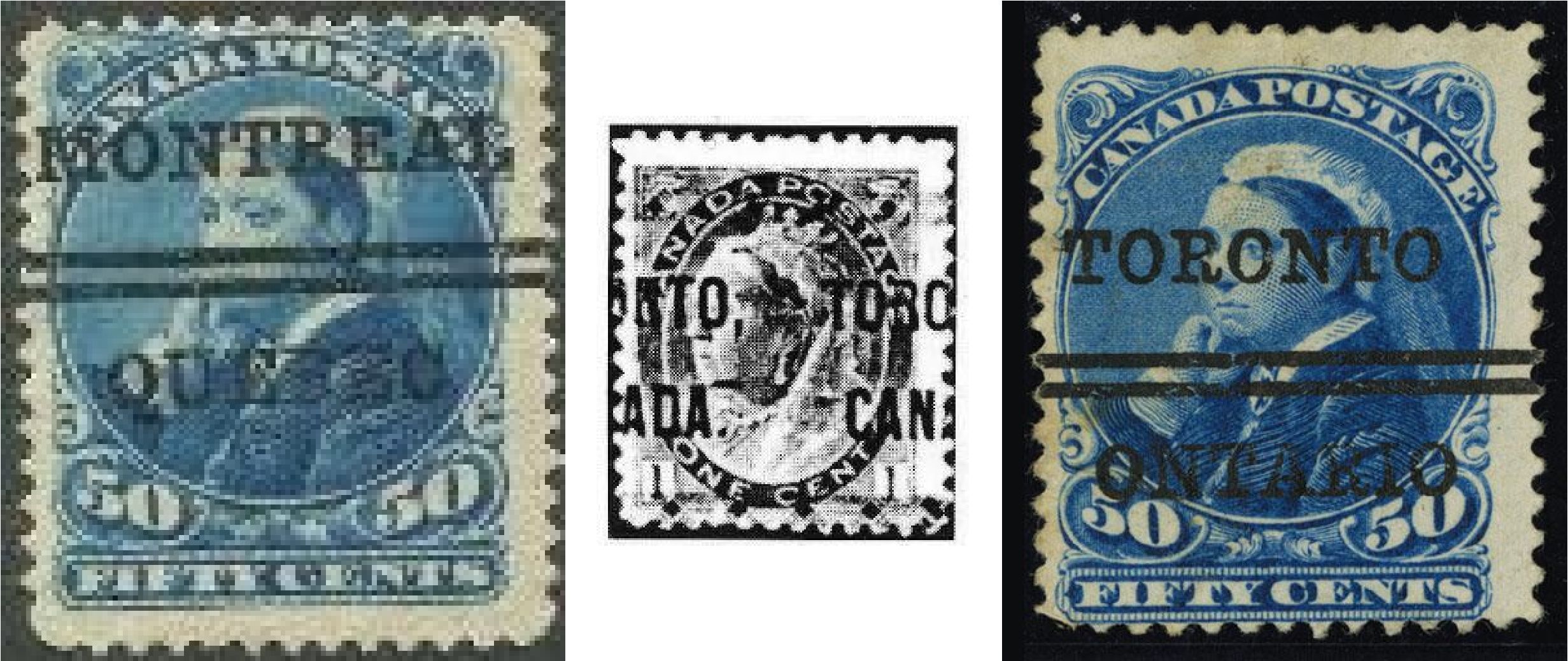
Edward VII Era
• Use of precancels expanded widely during the reign of Edward VII. 22 locations were added to the two of Queen Victoria’s era.
• The style of overprint varied somewhat from place to place as there were multiple printing locations. They all show the name of the town/city over the province (sometimes abbreviated) with a double line separator between the two, often with a filigree, or three wavy lines (Regina) or ladder (Peterboro)
Edward VII Era Locations/Denominations (¢)
Brandon / 1, 2
Brantford / 1, 2, 5
Bridgeburg / 1
Brockville / 1
Browns Nurseries / 1
Calgary / 1, 2
Carberry / 1
Edmonton / 1, 2
Halifax / 1, 2, 5
Hamilton / 1, 2, 5
Kingston / 1, 2
London / 1, 2, 5
Montreal / 1, 2, 5, 10, 20, 50
Niagara Falls / 1
Ottawa / 1, 2, 5, 7
Peterboro / 1
Quebec / 1, 2, 5, 7, 10, 20
Regina / 1, 2, 5
St. John / 1, 2, 5
Toronto / 1, 2, 5, 7
Vancouver / 1, 2, 5
Victoria / 1, 2, 5
Windsor / 1, 2, 5
Winnipeg / 1, 2, 5, 7, 10
Edward VII Era Examples
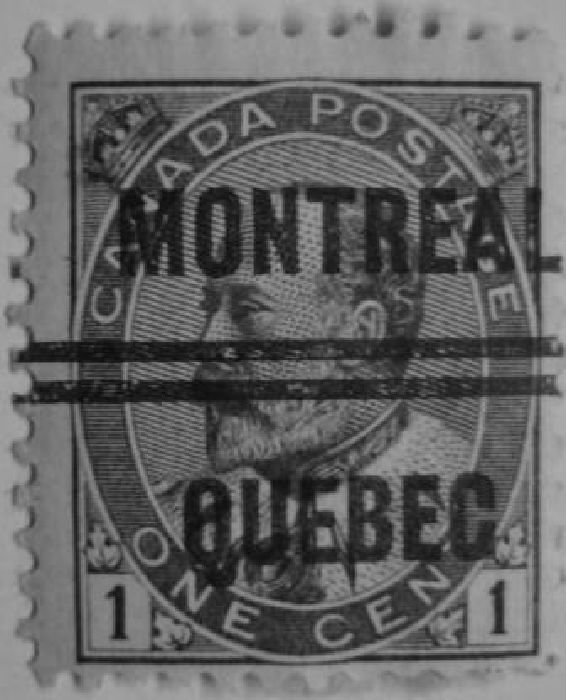

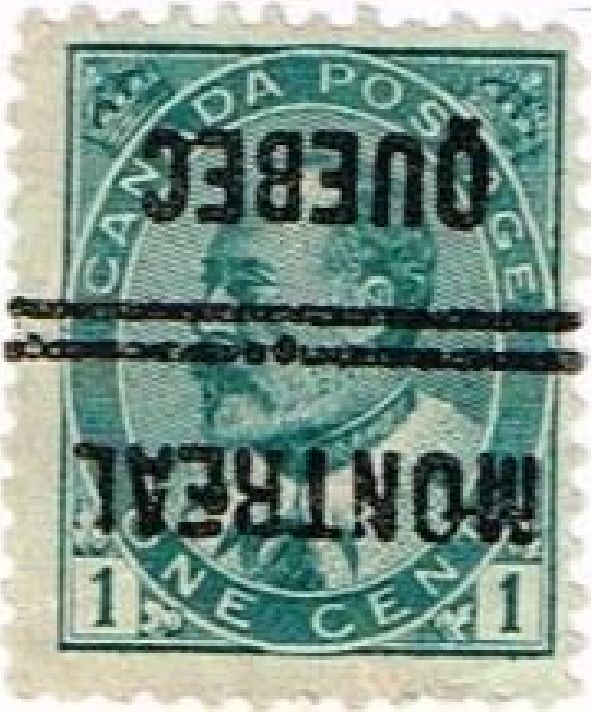
A third class matter precancel was produced in 12 locations during the reigns of Victoria and Edward VII in denominations of ½, 1, 2, 5, and 7 cents. The overprint is consistent across all issuing post offices
Brandon / 1,2
Bridgeburg / 1
Brockville / 1
Browns Nurseries / 1
Hamilton / 1,2
London / 1, 2
Montreal / 1, 5
Niagara Falls / 1
Ottawa / 1, 2, 5, 7
Quebec / 1
St. John / 1, 2
Toronto / ½, 1, 2 , 5, 7
Third Class Examples
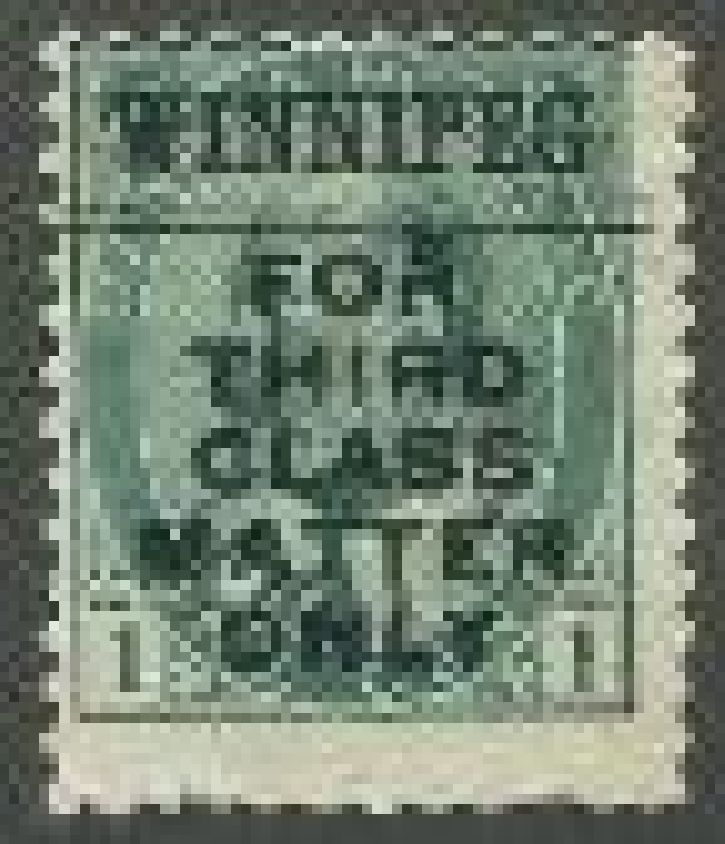

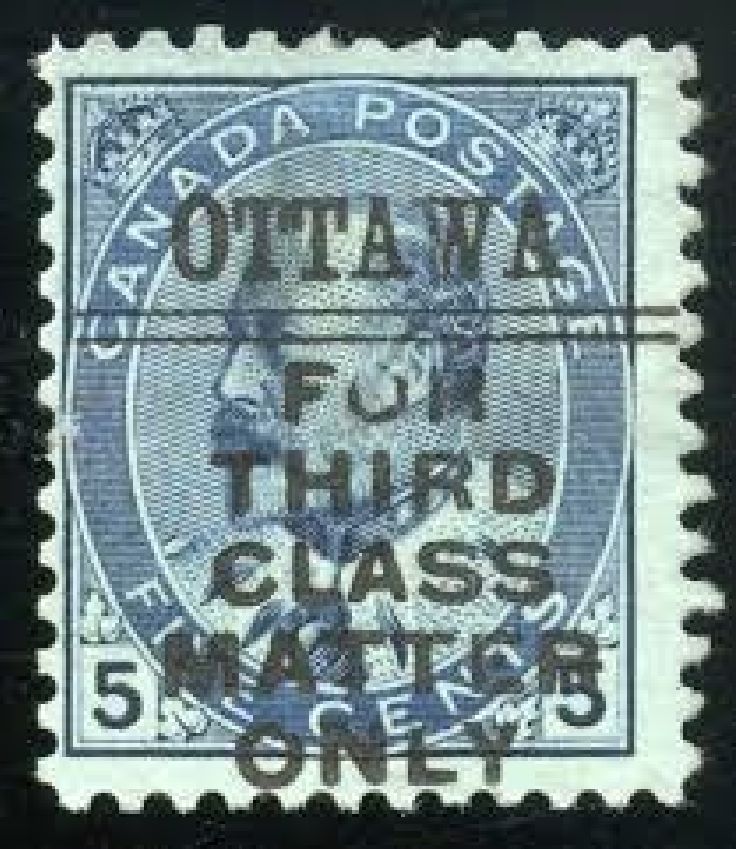
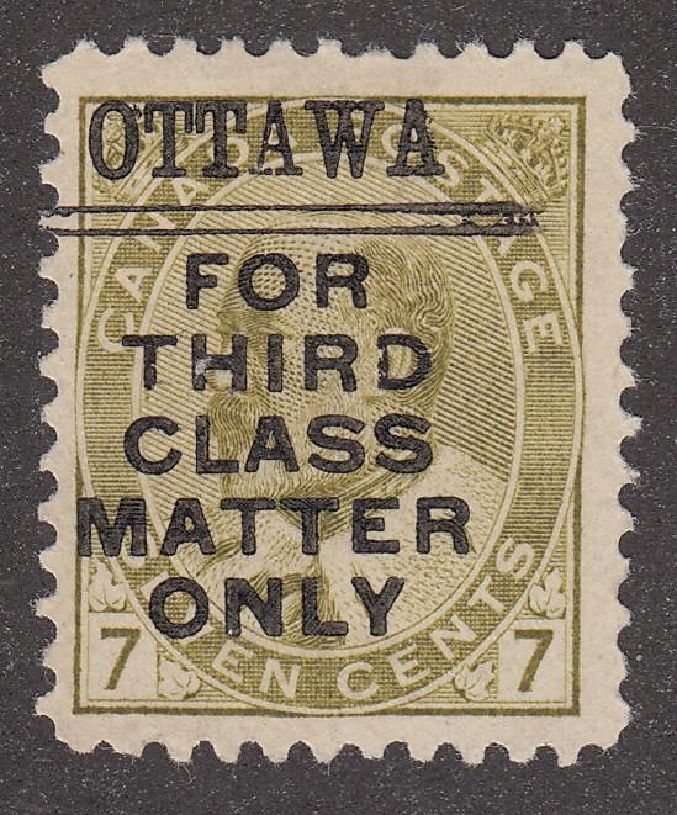
George V Era
• Over 30 additional towns and cities were added to the list of precancel issuers
• It was during this reign that town and city names were replaced by the four-digit money order number for the issuing post office between two dual lines
• Lines-only formats V, W, and X were also applied
Third Class Examples
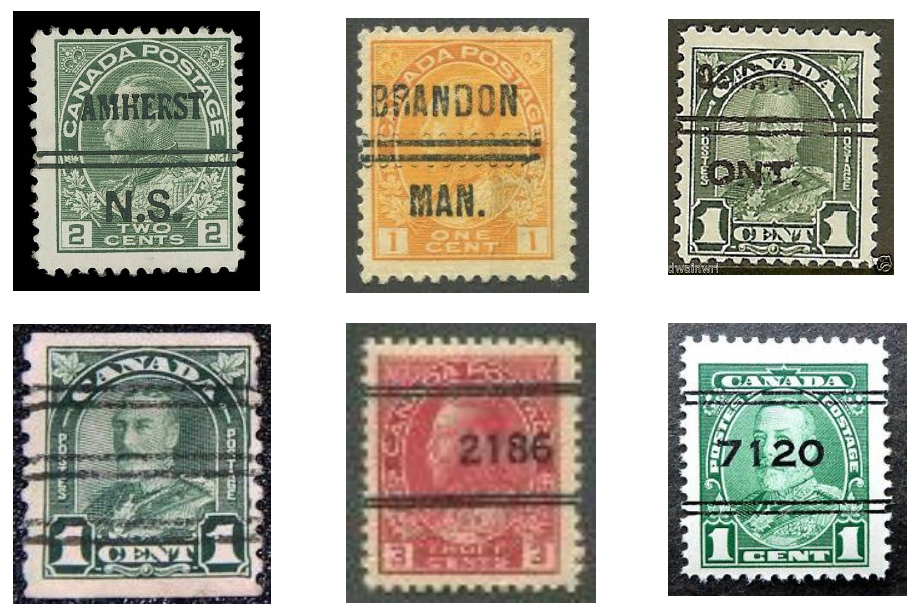
George VI Era
• Precancel format V was applied to 1 and 2¢ issues of four different issues. Format X precancels were applied to 1, 2, 3, and 5¢ values of three different issues.
Third Class Examples
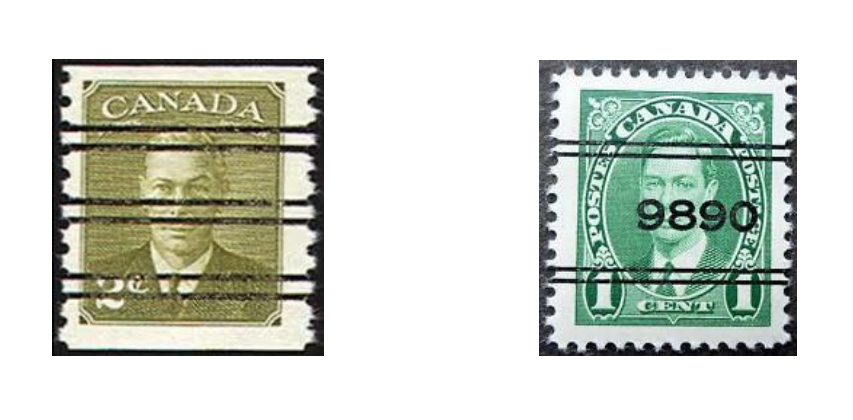
Elizabeth II Era
• No new post offices were added. Formats V, X and Y were used
• Format V was applied to coil stamps only of the 1953, 1962 and 1967 issues
• Format X was applied to sheet stamps of the 1953, 1963 and 1967 issues
• Format Y precancels were applied to the 1973 prime ministers issue and the 1977 flowers issue
Third Class Examples

With Perforated Initials
• These emanated from 21 locations and are also found on some bar precancels
Brandon (3 companies)
Quebec (1)
Brockville (2)
Regina (2)
Calgary (2)
St. John (1)
Edmonton (1)
Saskatoon (1)
Estevan (1)
Toronto (13)
Hamilton (2)
Vancouver (2)
London (1)
Walkerville (1)
Montreal (8)
Windsor (4)
Moose Jaw (1)
Winnipeg (4)
North Battleford (1)
Yorkton (1)
Ottawa (3)
Bars (8)
With Perforated Initials
•Nearly all perfins are company initials.

Constant Varieties
• There are many varieties in both the Bar and Town/City precancels
• The varieties fall mainly into three categories: damaged lines/letters, missing letters, and added markings (e.g., dots)
• Shifted precancels (left-right and up/down are common and not recognized as varieties.
The Market
• The market for Canadian precancels is active.
• In auction, they often sell at or near catalogue value. Some sell for more than catalogue
Bibliography
• Kraemer, J. E., Marasco, D., and Field, B., editors, The Standard Canada Precancel Catalogue 6th Edition, The Unitrade Press, Toronto, Canada, 2010. Also the 7th Edition, 2015.
• Reiche, Hans, Canada Constant Precancel Varieties, The Unitrade Press, Toronto, Canada, 1995.
• Walburn, H. G., The Canada Precancel Handbook, The Unitrade Press, Toronto, Canada. 1988
